Now that your potatoes are ready to be harvested, you might wonder what is the next step to storing them. Well, before the potatoes can be stored, they need to be cured. Let me guide you, step by step on how to cure potatoes and then store them for winter storage.
Cure the potatoes spread out on a table, a rack, or a screen to keep them above the cold ground, with good air circulation where they can dry and the skin starts to harden. Do not wash potatoes after harvesting them. Curing potatoes is important before they are put up for storage. During the curing process, the potatoes need good air circulation and darkness, as the light will turn them green which is mildly poisonous. Curing potatoes in a garage, basement, or a dark covering will work well. If no under-cover shelter for curing potatoes is available to you, then cover the potatoes with a dark felt blanket or a blanket that will keep them out of direct light but will still allow good air circulation. Let the potatoes cure for 7-14 days. Halfway through the curing process, they can be turned over. As you turn the potatoes, inspect them for cuts and any blemishes, soft spots, and rot spots. Any potatoes with soft spots and rot should be put aside and not put into long-term storage but instead used up as soon as possible. Rot and soft spots can spread to other potatoes easily during long-term storage. Minor cuts and nicks will heal during the curing process. The curing process is also a good time to sort potatoes by size into small, medium, large, and seed potatoes which will be planted next year for more harvest. A good seed potato is the size of an egg and without any blemishes. Small potatoes go bad quicker than medium and large ones. Therefore, small potatoes should be used up first. Use small potatoes in dishes that do not need the skin taken off. Medium-sized potatoes are good for mashed potatoes, side dishes, and casseroles, while large potatoes are best for baking. The Ideal temperature to store the potatoes is about 45F with high humidity, good air circulation, and dark. Potatoes can be stored for up to 6-7 months depending on the variety. In a home setting, most of us cannot possibly create an ideal highly humid condition for potato storage, but to store your potatoes for winter, aim for a space that allows good air circulation, allows some humidity, and coolness, and is very dark. Store cured potato harvest in plastic crates, baskets, plastic bags with holes for air circulation, and cardboard boxes with holes in which potatoes can be layered lasagna style between straw or shredded paper for insulation. Check your stored potatoes periodically and take out any potatoes with soft sport or rot so it does not continue to spread to other healthy potatoes. For seed potato storage, brush gently any dirt off, check for any blemishes, and then wrap each seed potato in newspapers. Store them in a cool, dark space in a crate, or cardboard box, with good airflow, some humidity, and darkness. Keep them stored like that until they are ready to be prepared for planting. Saving seed potatoes is ensuring that you are in control of your next harvest and not relying on seed potato companies.
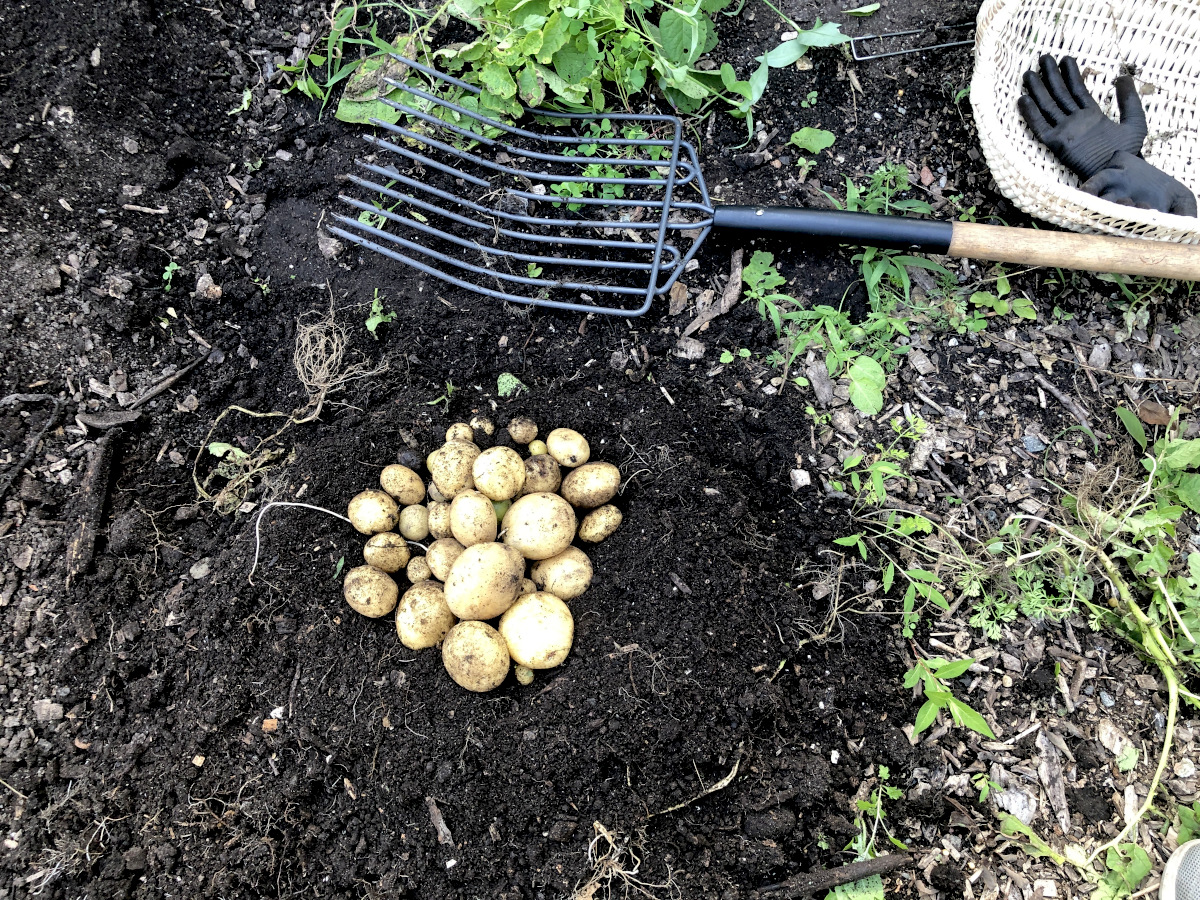
This year, in my growing zone 6, I stopped buying potatoes in July, right after I harvested my first mound. I have only a small garden but still am able to grow and harvest potatoes and save spending for months. Right after I harvest anything, I plant another batch right away. I just came back from the garden, because I went to check how long it took for my potatoes from planting to harvesting them, and boy, was I surprised! I still have a plant mark (please see a photo below), that says I sowed yellow potatoes on May 3rd and was supposed to harvest them on August 3rd. To my great surprise, it was only mid-July when I dug out some of my potatoes and stopped buying them from the store. I am very surprised it took only two and half months from seed to a usable harvest. I spent about $5 on organic potatoes every other week, that is $10 a month. If I do not buy potatoes for the next 2-3 months, I will save $30. By then another harvest will come in and I will save another at least $40, if not more because I planted more potatoes as I rearranged my potato garden bed layout. That would be around $70 saved on the potato produce. And that’s only regarding the potatoes.
A GOOD READ: What is the best food to grow to save money?
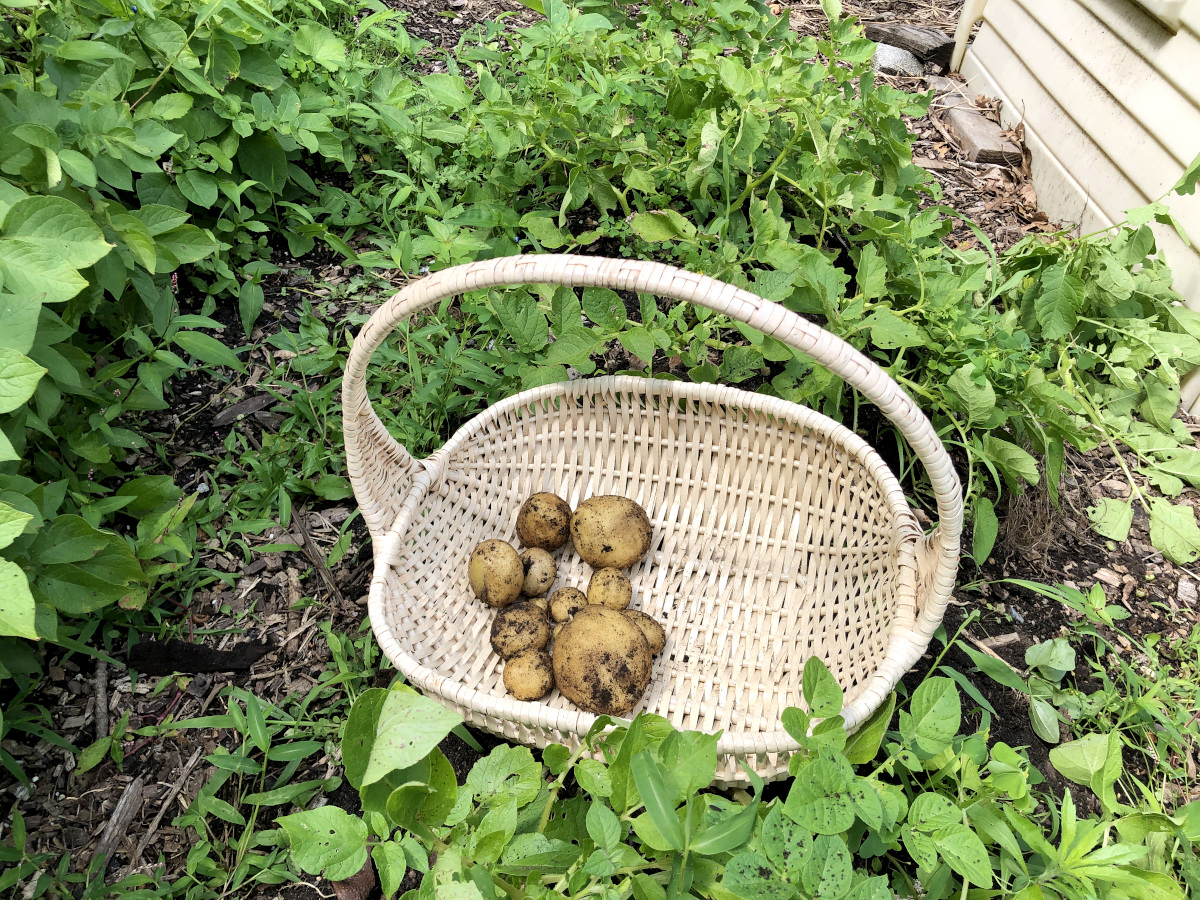
I have already harvested broccoli, cauliflower, and lettuce. I am still harvesting herbs, Swiss chard, cucumbers, zucchini, and cabbage. I will soon be able to harvest tomatoes and peppers. I have already harvested over 38 pounds of home-grown produce so far, and we are only in the middle of the season. While I am not able to harvest 100% of the produce, we like to eat in a year, it is worth it for me to grow my own produce. I have not spent anything on broccoli, cauliflower, garlic, potatoes, lettuce, herbs cabbage, zucchini, or Swiss chard for weeks. And soon I will stop spending on tomatoes and, peppers. While saving on these will not make me a millionaire, it is a good feeling that I have most of the produce I need for cooking at home and do not have to give my hard-earned money away for produce I can grow myself.
A GOOD READ: When and how to plant potatoes
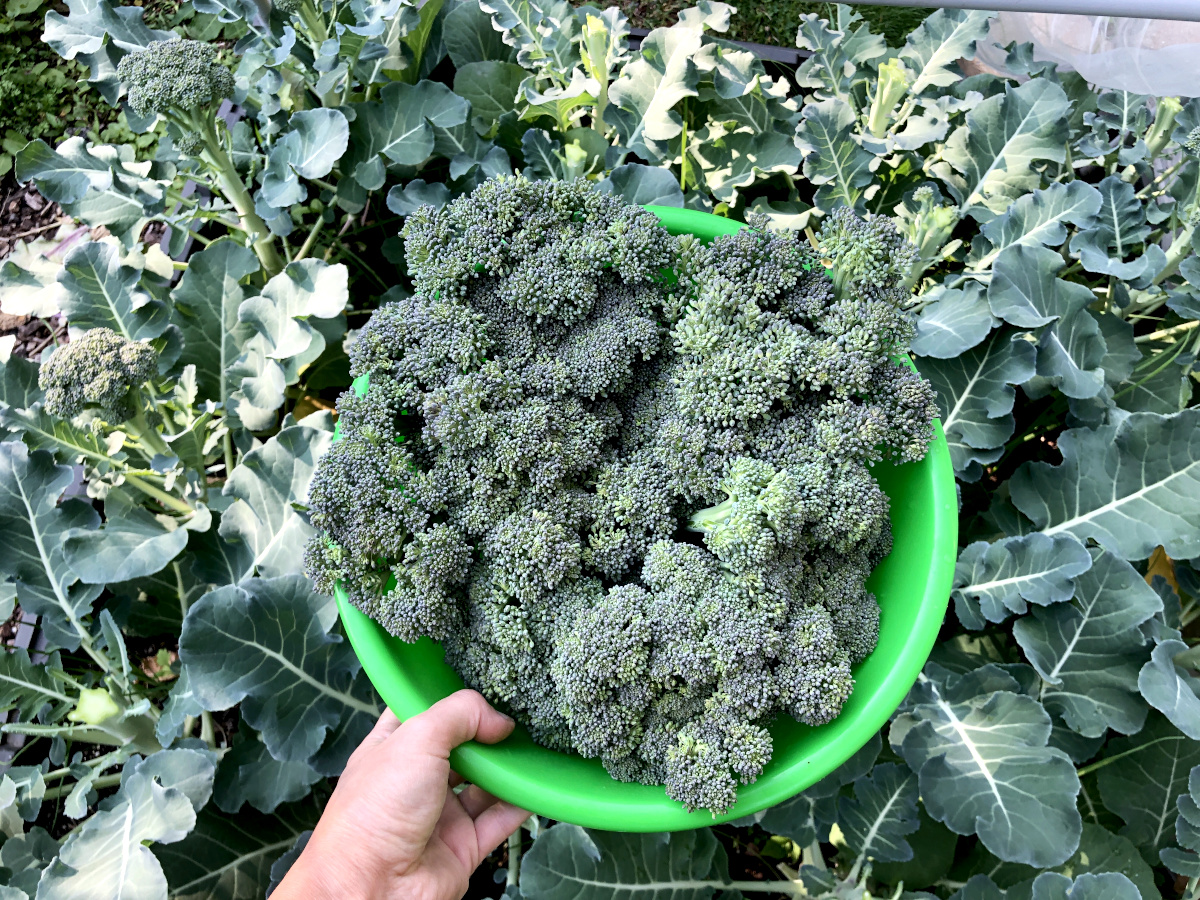
Yes, there is spending that perhaps each garden needs. Spending on fertilizer, dirt, compost, netting, garden beds. But I also sell what I grow that will compensate for the spending on the garden. I make my own compost so this year I did not buy any. I use mound rows instead of raised beds so I did not buy any raised garden beds this year. Because I was able to sell some mint, and seedlings I made some money I could use to buy dirt and fertilizer and that’s it. What I spent on the garden, the garden gives back. Yes, it will probably take a year or two to be profitable, but you will save on produce you grow yourself. If you don’t save, at least you will spend less as a result. If your goal is to only save money gardening, it will take your coupe seasons to build things up to reach your goal.
Most home gardeners however grow food to ensure they are eating tastier, healthier, more nutritious produce while enjoying the journey. In the end, if they save some money while gardening it’s a bonus, but might not be an end goal.
I garden because I want to save the spending money, eat healthier, teach my family how to grow food as basics of life, and save food for long-term storage and I thoroughly enjoy gardening. It is my hobby, it is what I like to do, and it is my physical workout too. It also makes me feel wiser than I was last growing season because with each season I learn many new things.
This year, I learned that instead of growing indeterminate tomatoes, I will grow mostly determinate tomatoes because indeterminate tomatoes grow too tall, and take too long to ripen the good amount of tomatoes I need to gather for canning. While determinate tomatoes are shorter, therefore easier to stake up, easier to manage, and produce a good amount of tomatoes that ripe within a month I will have a nice amount of harvest to preserve at one time.
We, home gardeners, learn each year something new. I assume after several years of gardening, that I will learn something new each growing season, and not a season will pass by that would not teach me anything.
Do you wash potatoes before storing them for winter?
Do not wash the potatoes before storing them for winter. Potatoes will last longer when kept cured and dry of all the direct moisture.
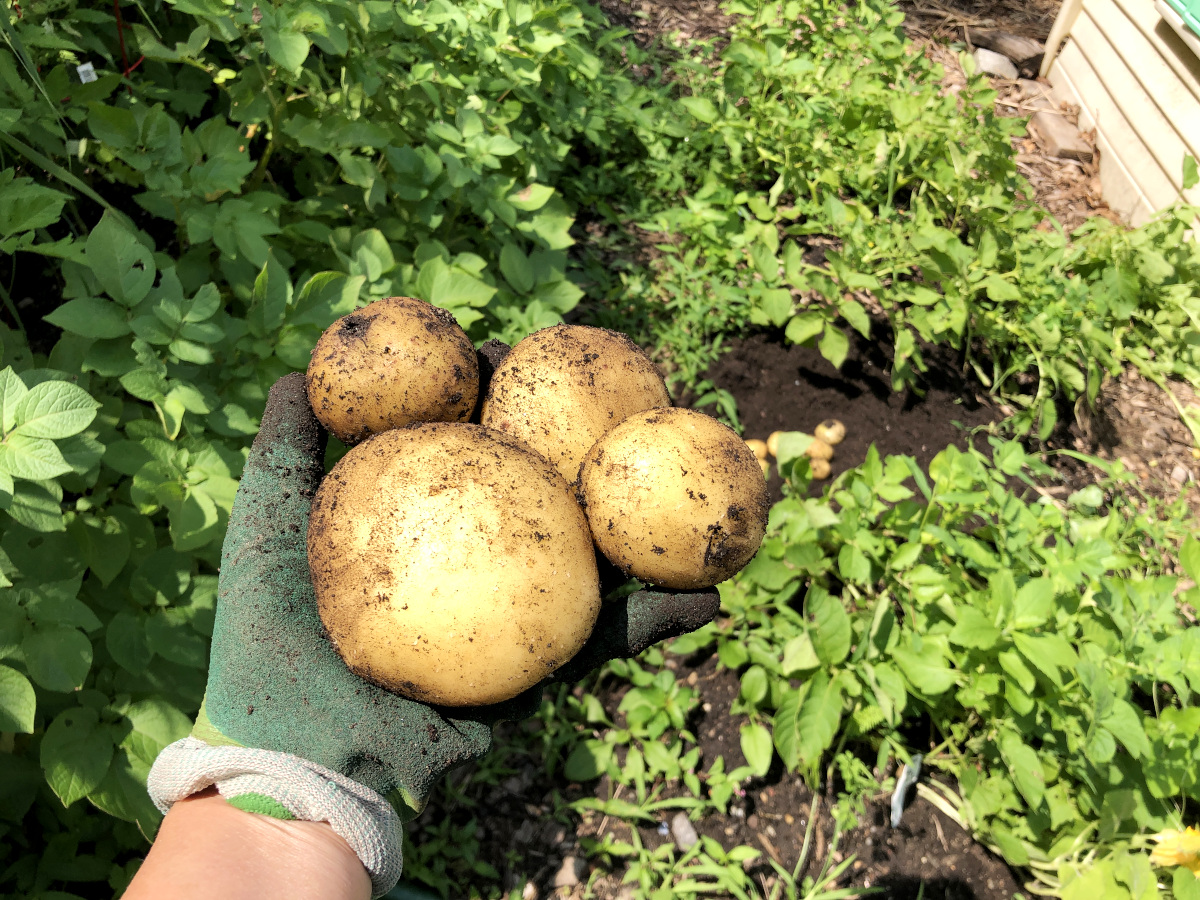
To dig out my potato harvest, I use a manure and bedding 10-tine fork similar to this one. The garden fork is very easy to use as it is not very heavy. Using this kind of garden fork, I can do less damage to my potatoes during harvesting compared to using a garden shovel. I use the garden fork when I deal with my compost pile when I dig my root produce and potatoes, and when I need to loosen up compacted soil. The garden fork is really a must-have tool in your garden tool collection as it can be used in hundreds of different ways.
I do not wash my potato harvest after digging it up. I really like growing but processing the harvests is what I do not enjoy as much as I probably should…yet. Not washing potatoes is a plus in my books! If I have many potatoes to cure, I would spread them on shelves in my mini greenhouse on layers of newspapers and let them cure covered with another layer of newspapers till I am happy with how hard the skin is. If I cure a smaller potato harvest, I cure it in a shed in a basket similar to this one, or in a cardboard box, covered with a layer of newspapers. They can also be stored in wooden fruit baskets like these. Once the skin is tough and the potatoes look nicely cured, I store them in cardboard boxes lasagna style layered between the shredded newspaper, then I simply store them in the basement until they are eaten all up.
Do potatoes need to be cured after harvest?
Yes, it is best to cure potatoes after harvest, before they are put in storage. Freshly harvested potatoes have very thin skin which also carries moisture with dirt on them. It is best to let the skin of potatoes harden up, the moisture of the skin evaporates completely during which most of the dirt will dry and fall off or can be easily rubbed off before storing them. This preparation is called curing. If the potatoes are put into storage with soft skin and moisture on them, they will most probably not last long and will rot away in a short time.
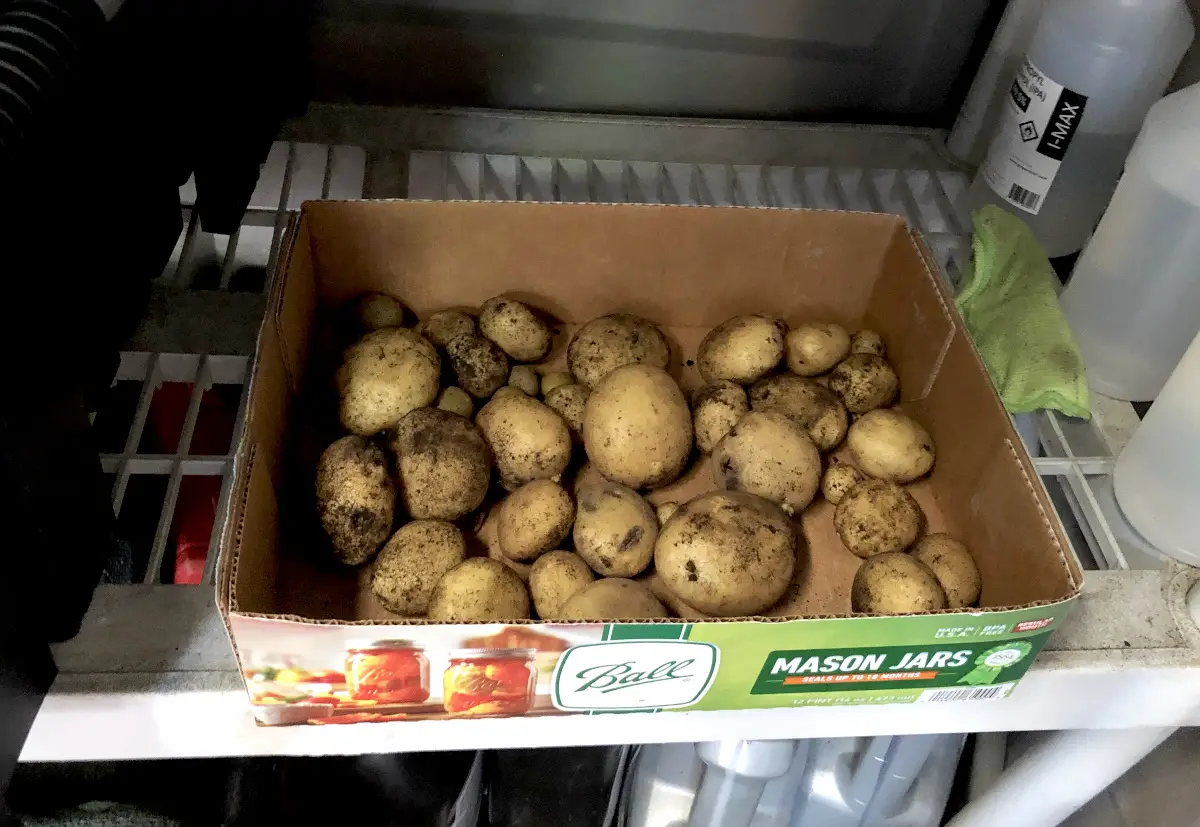
A GOOD READ: How to know when to harvest potatoes
What is interesting, is that when I was growing up, in Zone 5, I do not remember my parents curing the potatoes before storing them. Maybe I missed the curing process as a child. What I remember is that we put all the potatoes into the burlap sacks like these, and then dumped all the potatoes in the unheated basement room that served as a cellar. It was cool, dark, and humid all year. It was really an underground cellar room with perfect conditions for potatoes to cure and store. Who knows, maybe my parents let the potatoes cure in the burlap sacks before dumping them in storage but I just missed it as a child as I had no interest in these things. And maybe they just dumped them all in and they just cured well all on their own in those perfect conditions. I wish for a cellar room so much! I wish one day I will be able to have one, the bigger the better!
How long do you dry potatoes before storing them?
Dry, or cure potatoes before storing for at least 7-10 days, until the skin of the potatoes hardens up, and small nicks and bruises are completely healed over.
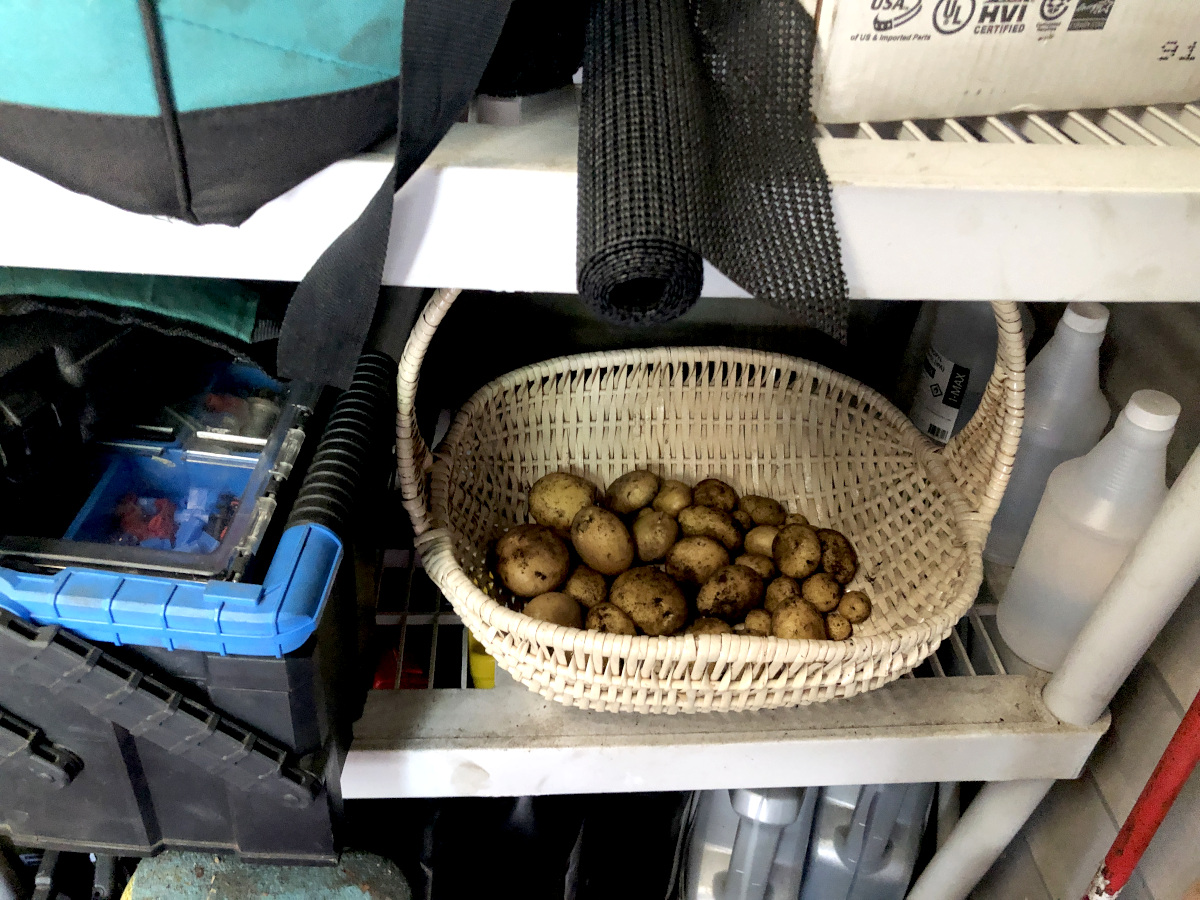
How do you tell if potatoes are cured?
Well-cured potatoes are firm to the touch and the skin feels tough and hard.
What is the difference between curing and storing potatoes?
The difference between curing and storing potatoes is that curing them means preparing them for storage. Storing potatoes is putting them away for long-term storage after they have been properly prepared. During the curing process, the potato skin hardens and gets tougher which helps the potatoes keep longer.
How do you store potatoes long-term without a root cellar?
Most home gardeners, do not have a root cellar. Store potatoes long-term without a cellar by storing them in a dark, cool space with good airflow and humidity. Keep the potatoes in a crate, or cardboard box layered lasagna style between the layers of straw or shredded paper so they do not touch. An unheated garage, north-facing room, or closet could do the job.
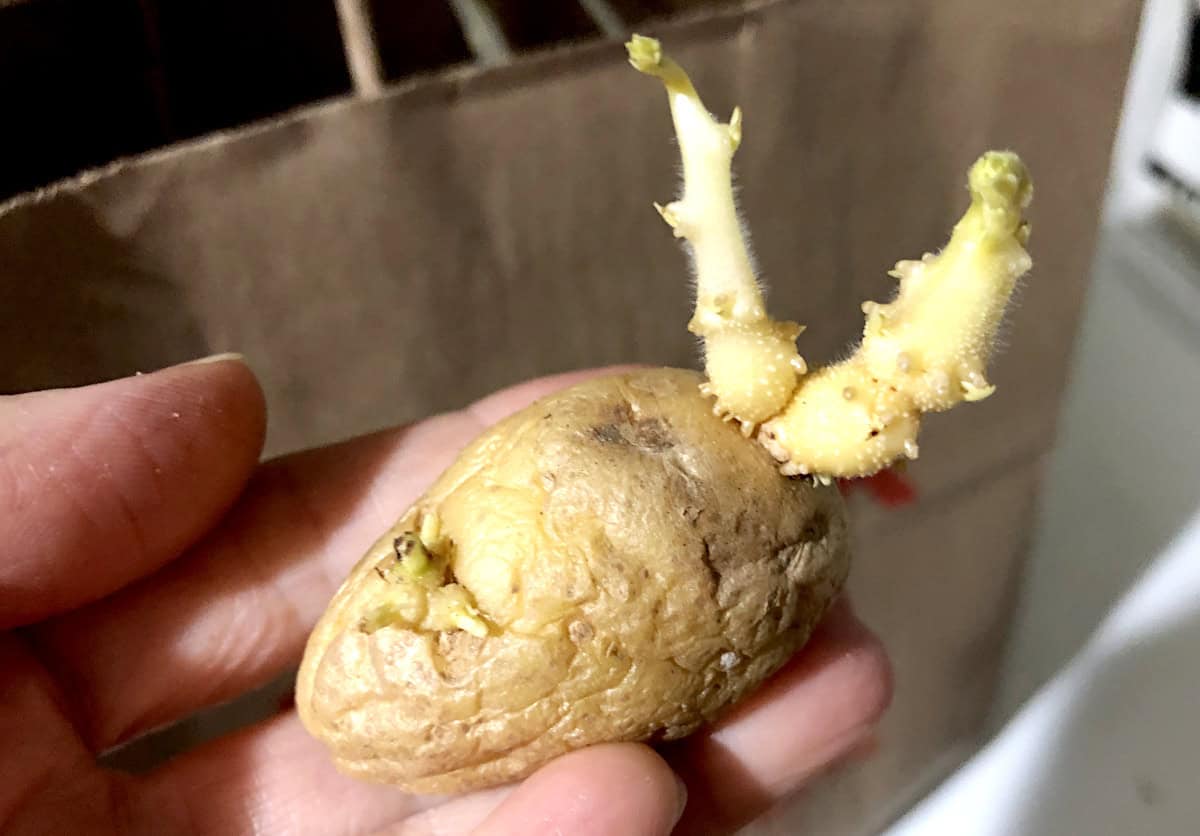
Please share with me how you cure and store your potato harvest. I am curious to hear from a variety of home gardeners as we all grow, cure, and store our harvests in different climates, different conditions, and circumstances. It always fascinates me to hear from others who grow in different zones and during totally different conditions than I do. We all learn not only from our own experiences but also from each other.
Best time to start a fall garden

